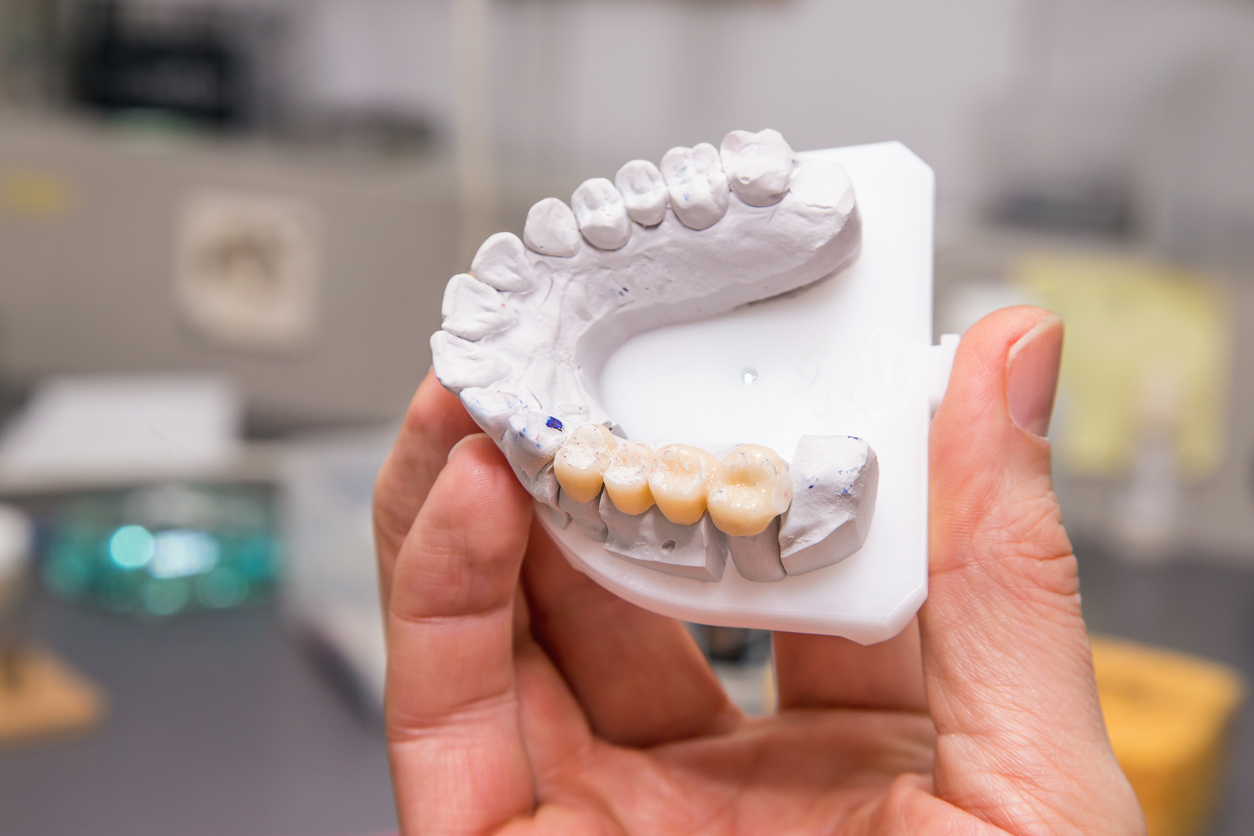
A Bridge is used to help prevent your teeth from shifting when you have tooth loss. We attach a replacement to your tooth. This will help you continue to eat and talk like normal and keeps your teeth from shifting.
Maintaining good dental health is very important because you must keep the teeth on either side of the gap healthy so they can continue to support the crowns. Smoking can compromise the strength of your teeth and may prevent you from being able to get a dental bridge.
The Process
A dental bridge is a prosthesis that will expand across the area where you are missing teeth. The teeth on either sided of the gap will have a crown fitted over them and then the prosthesis teeth will be joined to the crowns and fill in the gap. We will prep the teeth on either side of the gap beforehand so that the crowns will fit. After this, an impression of the gap and nearby teeth for the mold and will be used to help create the mold. The bridge will be fitted to your mouth and you will be ready to go.
Types of Dental Bridges
The most commonly used bridge is the Conventional Fixed Bridge, this is when crowns are placed on either side of the bridge and a new tooth is placed between to "bridge" the gap. The teeth on either side of the gap help support the new tooth. Most often it will be a 3-unit bridge and is most helpful in an area of the mouth that is not used as much in chewing. Temporary bridges are not made of porcelain and are less stable. You will have a temporary bridge while you wait for your permanent one.